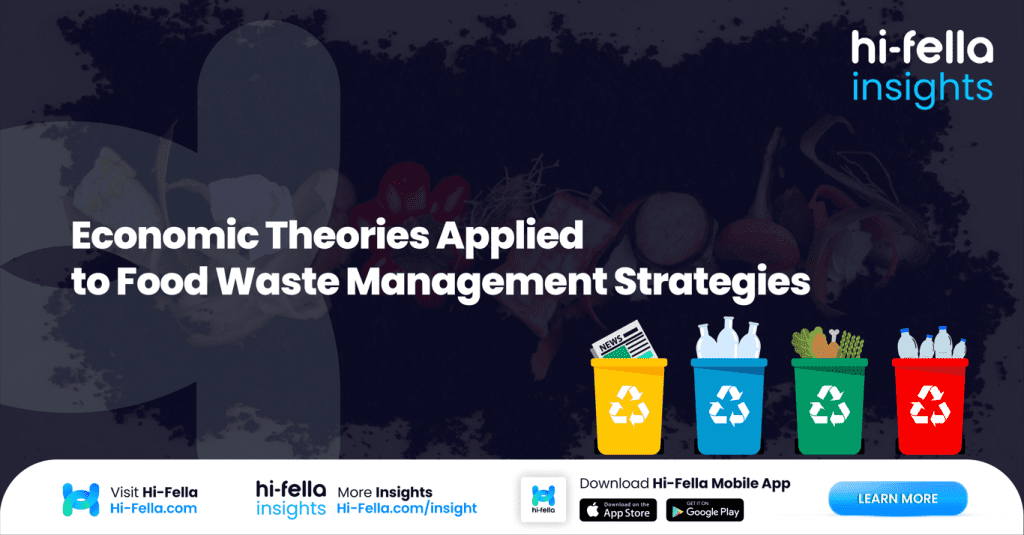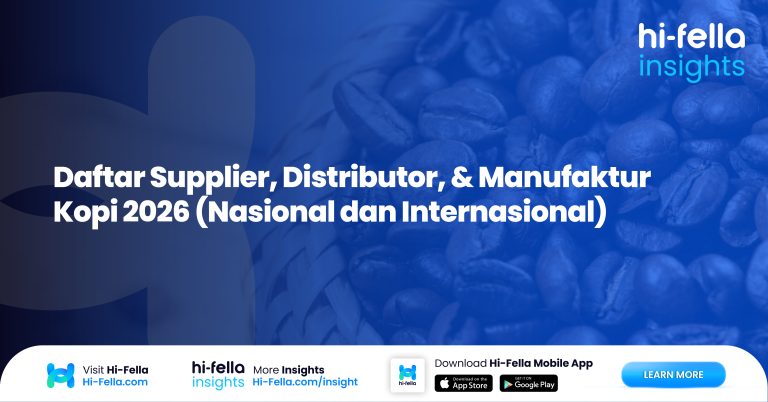Food waste isn’t just a social or environmental issue—it’s a market failure. Every year, we lose roughly one-third of all food produced globally, which equates to billions in lost value, resources, and opportunity. But here’s the thing: behind every discarded crate of tomatoes or expired carton of yogurt, there’s an economic mechanism at play.
To tackle food waste effectively, we can’t rely solely on moral appeals or awareness campaigns. We need to apply economic theory to understand why food is wasted, where the incentives break down, and how to design better systems that make wasting food financially irrational.
Let’s explore how classical and modern economic frameworks offer insights—and practical strategies—for food waste reduction across production, retail, and consumer levels.
Market Failure and Externalities: Why Food Waste Exists
To truly understand why food waste persists at such a large scale—despite technological advancement, food insecurity, and climate awareness—we need to step into the world of economic theory, specifically the concept of market failure.
A market failure occurs when the free market, left to its own devices, fails to allocate resources efficiently. In simpler terms: things that are valuable get wasted, and things that are harmful get underpriced. Food waste is a textbook example. Why? Because the true costs of wasting food—environmental, social, and economic—aren’t accurately reflected in the price paid or the decisions made by the people wasting it.
These unaccounted-for costs are known as negative externalities. An externality is a side effect or consequence of an economic activity that affects third parties, and in this case, those effects are negative and ignored by the market. When a supermarket, hotel, or restaurant throws away food, it’s not just the cost of the discarded product that’s at stake. That waste represents embedded resources: water used to grow the crop, fuel used in transportation, labour during harvesting and processing, electricity for storage, and packaging materials—all of which carry a carbon footprint and contribute to landfill emissions when dumped.
But the supermarket doesn’t pay for those environmental consequences. Their cost is limited to the book value of the unsold stock. The emissions from rotting food, the methane from landfills, the wasted freshwater—those costs are pushed onto society at large, including future generations, through climate impact, biodiversity loss, and food system inefficiencies.
Because these external costs are invisible in the pricing mechanism, there’s no built-in incentive for many businesses to reduce waste. It becomes cheaper—or at least easier—to throw food away than to invest in systems for redistribution, reprocessing, or donation. From a strict accounting point of view, the logic seems sound. But from an economic and environmental standpoint, it’s inefficient and irrational.
Correcting this imbalance requires internalising the externalities—a core principle in environmental economics. This means finding ways to make the hidden social and environmental costs financially visible to the actors responsible. Some examples include:
- Landfill taxes or tipping fees: These increase the cost of disposing of food, encouraging companies to seek alternatives like donations or composting.
- Carbon pricing: If emissions from food waste are taxed or capped, businesses will think twice before letting perishables go to waste.
- Subsidies or tax incentives for food donation: By rewarding redistribution, governments can tip the financial scales in favour of responsible behaviour.
- Regulatory requirements: Some countries (e.g. France) have implemented laws banning supermarkets from destroying unsold food, effectively making waste reduction a compliance issue with financial teeth.
In more sophisticated models, companies may even measure their true cost of waste using Environmental, Social, and Governance (ESG) frameworks. Some are beginning to track “shadow pricing” for emissions and water use—factoring in the real-world cost of waste into internal decision-making, even if those costs aren’t reflected on the balance sheet yet.
In short, food waste persists not because we lack the technology or logistics to prevent it, but because the market currently treats waste as a low-cost outcome, when in fact, it’s anything but. By reframing food waste through the lens of market failure and externalities, we gain clarity on why it continues—and, more importantly, how we can fix it using economic levers that reward efficiency, sustainability, and accountability.
And if you’re a food supplier, exporter, or distributor trying to design smarter supply chains with lower waste and higher value, hi-fella can help you connect with buyers, platforms, and partners who prioritise efficiency over excess. Because in the future of food trade, waste is a cost no one wants to carry.
The Role of Price Signals and Marginal Utility
Another key concept is price signalling. When food is underpriced—especially in high-income countries—consumers and retailers behave as though it’s disposable. If a ready-to-eat meal costs less than $5, the incentive to consume it before it expires weakens. When food has low marginal utility (i.e. people don’t value the next unit as much), waste becomes more likely.
Restaurants facing fixed pricing and buffet models often suffer from this problem. Since the marginal cost of offering one more item is low, there’s a tendency to overproduce—leading to high post-service waste.
Dynamic pricing and value-based portioning, however, can shift this. For example, selling soon-to-expire goods at a discount helps capture value before it disappears. Apps like Too Good To Go or food delivery platforms with surplus deals are real-world examples of marginal utility maximisation in action—making it economically attractive to prevent waste.
Asymmetric Information and Consumer Behaviour
The information gap between producers, retailers, and consumers also fuels food waste. This is where asymmetric information theory comes in—one party in a transaction has more or better information than the other.
For instance, expiration labels often confuse consumers. “Best before” and “use by” dates are interpreted as hard stops, even when the product is still safe to consume. This leads to perfectly edible food being tossed based on conservative labelling, not actual spoilage.
Retailers and regulators can fix this through clearer labelling, digital expiry tracking, or even AI-driven shelf-life prediction. By reducing the information gap, we empower consumers to make better choices—and waste less.
Behavioural Economics: Nudging Better Habits
While traditional economics assumes people act rationally, behavioural economics acknowledges that we don’t. We overbuy during promotions, forget what’s in our fridge, and prioritise convenience over efficiency.
This is where nudges—small, smart interventions—can shift behaviour without banning choices. For example:
- Supermarkets placing “ugly” produce in visible, lower-cost bins
- Apps reminding users of expiry dates
- Meal kits with pre-portioned ingredients to reduce over-purchasing
These strategies draw from concepts like loss aversion (we hate wasting money more than wasting food) and present bias (we prefer convenience now over planning ahead). When food systems are designed with these biases in mind, they can reduce waste and improve customer satisfaction.
Supply Chain Economics and Coordination Failures
A lot of food waste doesn’t happen in kitchens—it happens upstream. In agriculture and processing, food is lost due to overproduction, lack of cold chain infrastructure, or buyer contracts that demand cosmetic perfection.
Here, the issue is often one of coordination failure. Farmers, processors, and retailers don’t have aligned incentives or shared information. If a farmer overproduces due to uncertain demand and lacks reliable buyers, surplus rots in the field.
Contract farming, digital supply chain tools, and transparent demand forecasting platforms are economic solutions that help bridge this gap. When players along the chain have shared value models, food flows more efficiently, and waste is minimised.
Incentive Structures: When Waste is Built Into the Model
Sometimes, food waste is deliberately tolerated because the alternative isn’t economically rewarding. For example, surplus food may be discarded because donating it involves transportation costs, liability fears, or regulatory red tape.
This is where incentive theory comes in. If we want businesses to divert surplus food to food banks or biofuel instead of landfill, we need to make it worth their while. This could be tax credits, subsidies, or reverse logistics networks designed to minimise the cost of doing the right thing.
Countries like France and Italy have already implemented laws that mandate donation of unsold food and offer tax relief in return. This isn’t just ethical—it’s economically sound policy that realigns incentives with value retention.
Applying Economic Logic to Real-World Strategy
Reducing food waste isn’t just about good intentions—it’s about realigning costs, incentives, and behaviour. Economic theory gives us the frameworks to understand where the system breaks, and how to design smarter interventions that work for both people and profits.
Companies that understand this—and build food waste prevention into their business model—aren’t just being responsible. They’re tapping into operational efficiency, cost savings, brand equity, and competitive differentiation.
This applies whether you’re a restaurant group, a snack food exporter, or a supermarket chain trying to cut shrinkage. And with rising global demand for sustainable trade and transparent sourcing, food waste management is no longer a side issue—it’s a core business priority.
Ready to Trade Smarter, Waste Less?
If you’re looking to scale your food business, enter new markets, or showcase your sustainability credentials to global buyers, it’s time to align with platforms that get the full picture.
hi-fella connects food brands, manufacturers, and exporters with international partners, exhibitions, and market insights—with an eye on efficiency, traceability, and waste-conscious trade. Whether you’re exporting surplus-grade fruit, redistributing underutilised products, or building smart supply networks, hi-fella helps you scale with strategy—not waste.
Because the future of food is smart, lean, and circular—and hi-fella is where that future begins.








